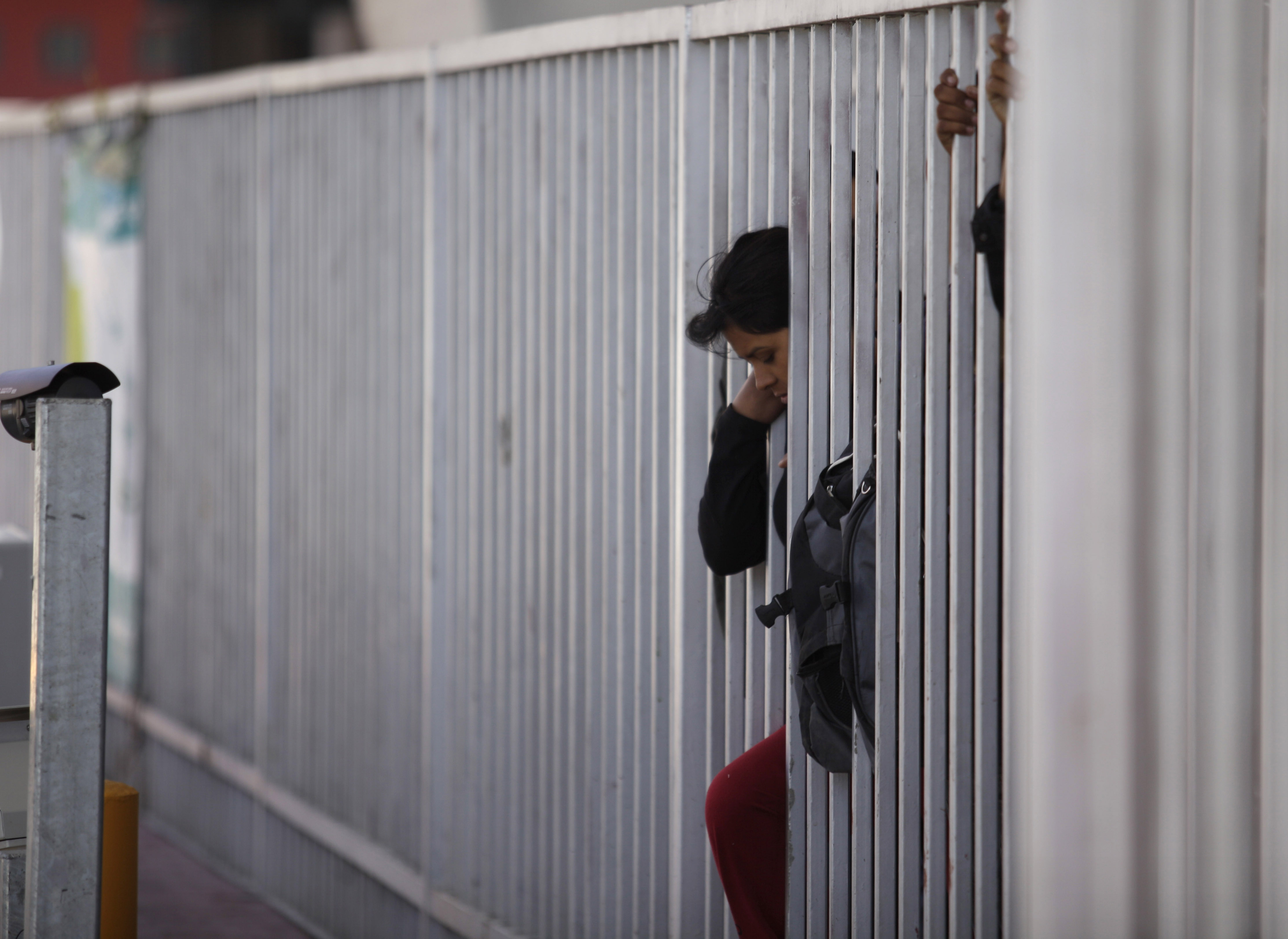Immigration Bill Prioritizes Border Security

A woman waits to be registered by Mexican authorities after being deported from the US to the border city of Nogales, Mexico. (AP Photo/Gregory Bull)
A bipartisan Senate “Gang of Eight” unveiled its compromise immigration bill on Tuesday to fix a system that even the head of the Office Immigrations and Customs Enforcement has admitted is “broken.”
But before any of that can be addressed, the bill requires the Department of Homeland Security to put in place new measures to lock down the U.S.-Mexico border.
The bill allocates billions of dollars to ratchet up the number of apprehensions and “turn backs” — people who cross the border but return to Mexico. It allocates $3 billion for additional Border Patrol agents, Customs officers, surveillance cameras, drones and the staff to man them.
There’s also an additional $1.5 billion dedicated to building a bigger, better border fence on the Mexican border: Homeland Security must identify the best areas for “fencing, including double-layer fencing, infrastructure and technology.”
The Border Patrol already spent $4 billion on border security in the 2011 fiscal year. It now has the ability to monitor nearly half — about 44 percent — of the 2,000-mile US-Mexico border. It’s nearly doubled the number of agents on the border in recent years, from about 9,500 in 2004 to 18,500 in 2011.
But a February Government Accountability Office report report (pdf) found that the Department of Homeland Security doesn’t know for sure what difference all that has made.
The problem’s in the data. Border Patrol officials don’t have a sure way of tracking all illegal cross-border activity. So to gauge progress, officials in each sector add up the number of apprehensions, turn backs, and “got aways” — the ones who don’t get caught — in their own territory. But until recently, each of the nine sectors along the border defined and collected its own data. That also leads to both double-counting and under-counting, according to the GAO report. For example, a “got away” logged in one sector might be caught and categorized as “apprehended” in another.
“As a result of these data limitations,” the report said, “Border Patrol headquarters officials said that while they consider turn back and got away data sufficiently reliable to assess each sector’s progress toward border security and to inform sector decisions regarding resource deployment, they do not consider the data sufficiently reliable to compare — or externally report — results across sectors.”
The new bill requires an “effectiveness rate of 90 percent” in apprehensions and turn backs in the most highly-trafficked sectors on the border. But it will be difficult to know how successful the Border Patrol is without better data.
The Border Patrol issued new rules in Sept. 2012 to help standardize data collection across its sectors. It also told the GAO that it was in the process of coming up with performance goals and other ways to measure its progress to better determine how and where to allocate which resources, “but has not identified milestones and time frames for developing and implementing them,” the report said. Homeland Security told the GAO that it would do so by Nov. 30 of this year.





